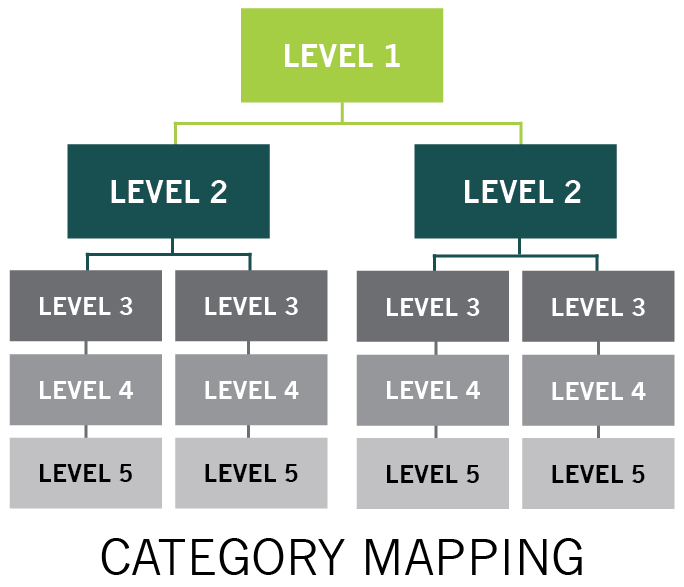Finding Opportunities In Spend Analysis
In Western astrology, it is believed the universe is formed by four Elements: earth, air, fire and water.

Each of the four contains its own unique and beneficial properties within itself and when they work together they create one perfectly formed universe.
The same is true with the Source-to-Pay environment. Each Element is individually important and valuable to create and /or deliver value. However, when all the Elements across the Source-to-Pay spectrum work together, a holistic and integrated best-in-class Procurement organization is enabled.
Nitor has developed an 8-Element Framework to assess, build and transform the people, process and technology aspects across the key activities of any Procurement organization. These 8-Elements are the foundation that support best-in-class Procurement organizations. 
Over a series of eight blogs, we will look into each Element, discuss common gaps, identify key indicators of high performance and explore the interaction with the other Elements.
Element 1: Spend Analysis - Finding The Opportunities
Where do you start to look for opportunities to create value in Procurement? In your spend data. Do you see them?
Many organizations don't see the true opportunity as they have poor visibility into supplier spend caused by:
- Lack of line level information to make the spend data useful
- No single natural category hierarchy / taxonomy to correctly classify spend
- Technology solutions not being fully utilized to aid dynamic review of spend
- Errors in the vendor master causing multiple instances of the same supplier
- Poor training on methodology of how to analyze spend
Poorly managed master data can create unnecessary risk and put significant savings out of reach. Bad data in disparate systems affects business operations and requires high manual effort to even make it partially usable.
Addressing these issues takes time and effort, so it often gets pushed out. However, many organizations are now beginning to realize the importance of conducting best-in-class Spend Analysis and also utilizing powerful technology solutions to aid this process.
Without deep insights into supplier spend, Procurement organizations are effectively operating in the dark. This is a supplier's dream scenario and one they often take advantage of.
The saying "if you can't see it you can't fix it" could not be truer when it comes to spend data. To improve how Spend Analysis is conducted, Nitor has five key building blocks to enable visibility:
1. Master Data Management and Governance: Through addressing data quality, completeness and accuracy, establishing data management governance, building a consistent category taxonomy along with building a single source of the truth, significant progress can be made on how spend data can be used by an organization to add bottom line value.
Often, an interim approach to obtaining short-term improved data visibility to enable opportunity identification, is to take the compromised internal information, find the largest suppliers (or focus on specific categories), and develop a data gathering structure to ask suppliers to drill down and provide more line level visibility of their spend. The suppliers typically know more about their specific spend data than their customers so this is a valuable exercise.
2. Data Cleanse / Enrichment: Once usable data is collected, it should be reviewed to be normalized to ensure consistency of fields, such as SKU numbers, product/service names, categories, sub-categories, geographic indicators, units of measure, volume and price. Poor data cleansing can result in misunderstanding the opportunities available, putting priority on the wrong projects, or incorrectly allocating resources.
Utilizing contracts and invoices to enrich the data enables more insight and a sanity check on the information obtained.
3. Data Classification: Creating a single streamlined category taxonomy and associated codes is critical to structuring the spend data into a "natural" parent-child grouping and enable insight into category segmentation and supplier overlap across sub-categories. At this step, Procurement questions and answers start forming and ideas on opportunities begin to form.
4. Spend Review & Reporting: After developing deep insight into global spend data, identifying what was purchased, who purchased it and how much was purchased, the next step is to conduct a detailed review. Building high-level views with dynamic drill downs into spend by region/site, supplier, category, sub-category, addressable / non-addressable, contact type and channel type, starts to develop a picture of the organization's spend and provides a canvas to develop the detailed opportunity analysis.
5. Opportunity Analysis: Each category and associated sub-category is then reviewed for potential opportunities. Areas assessed include fragmentation of spend, tail spend, number of suppliers, market dynamics and price discrepancies. An opportunity report and sourcing strategy for each category is then developed.
In order to assess where the organization should focus its time and effort, a cross-category prioritization is developed through assessing each category's opportunity score / value based on:
- Savings / Value - which initiatives will produce the highest return
- Business Need - which initiatives are urgent and which can be planned forward
- Risk / Complexity - how complicated is the execution of the opportunity
- Time-to-Implement - the time and effort needed to execute the opportunity

Without detailed data, a natural category hierarchy, visibility and insight into the existing spend with suppliers across categories, how can an organization make informed decisions on category management, optimize sourcing strategies, leverage spend power and manage suppliers?
The answer to the question is simple - they can't.
The good news is Nitor has enabled many global and national organizations to address these issues in Spend Analysis. This groundwork paves the way for the remaining seven elements and the foundation supporting a best-in-class Procurement organization.
Nitor helps all types of organizations assess their current state and find the best solutions to transform Procurement. Be sure to check back to learn about Element 2 - Category Management and see how Spend Analysis paves the way to aid in mapping the category, establishing the long-term vision and strategy and identifies a portfolio of potential projects to be executed using strategic sourcing.
Visit us at www.nitorpartners.com.
| Gary Stoddard | |
| Partner |
{{cta('b5a69d54-0671-4cae-8749-203341234ac0')}}
